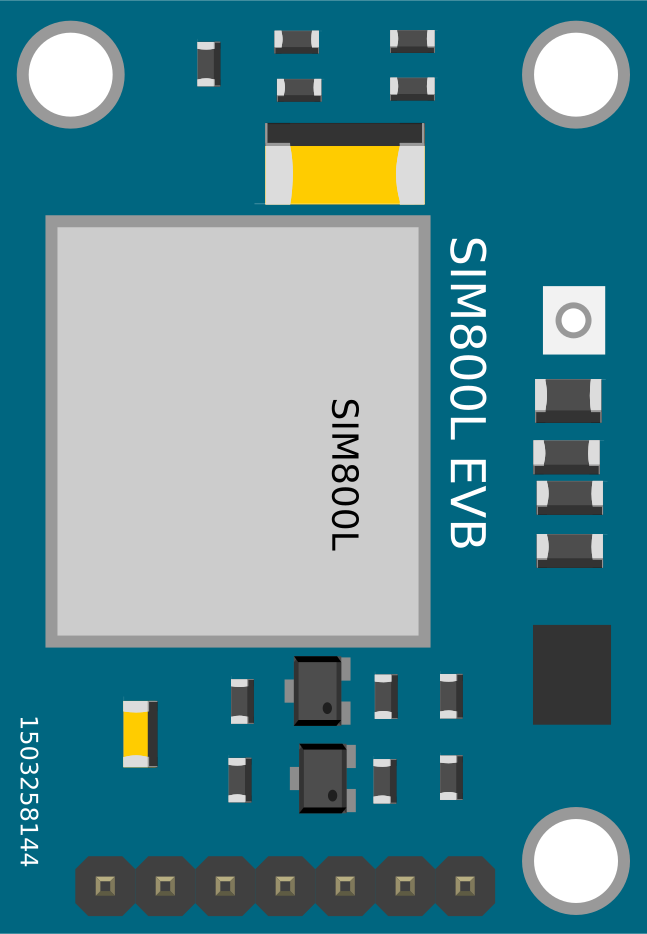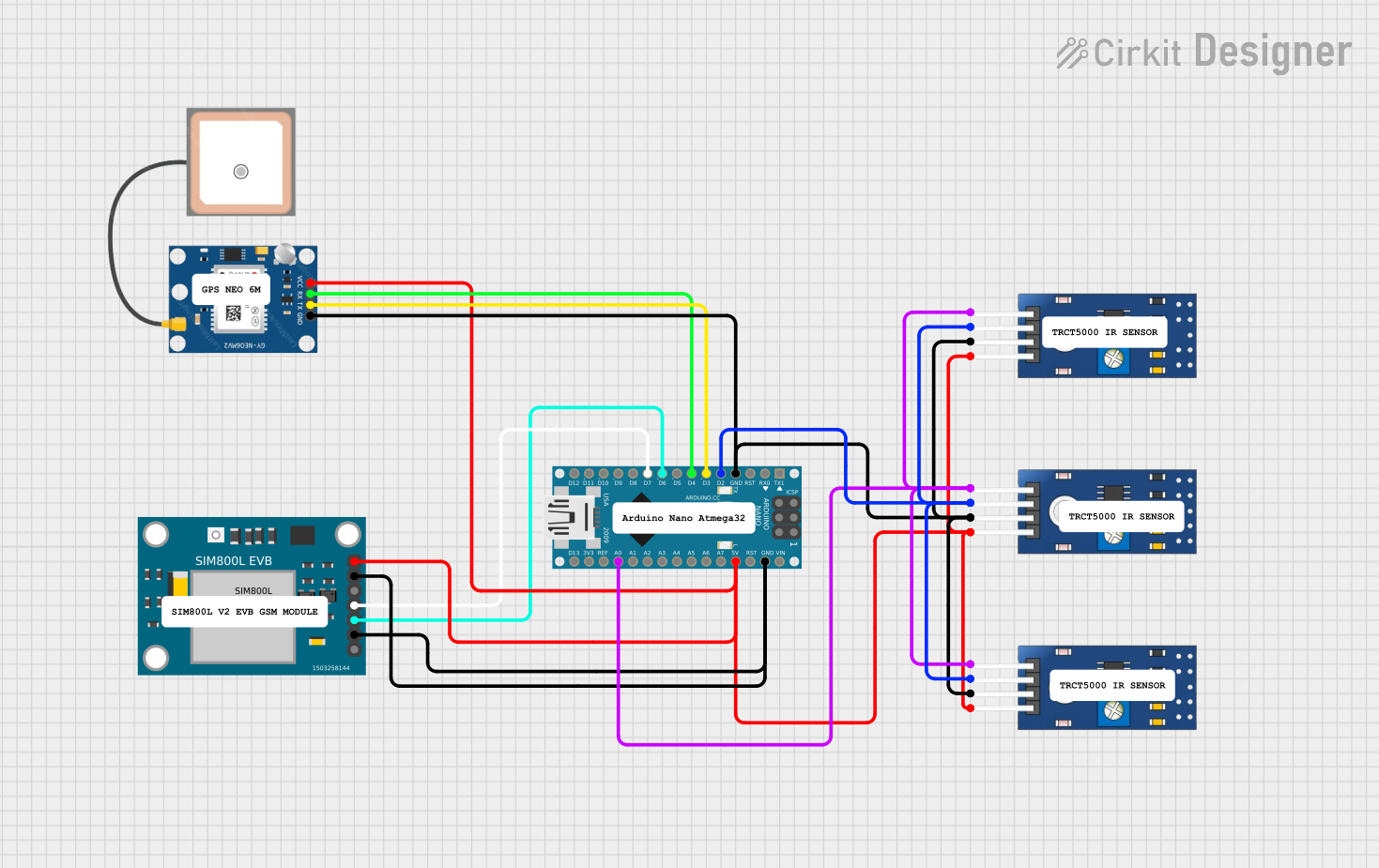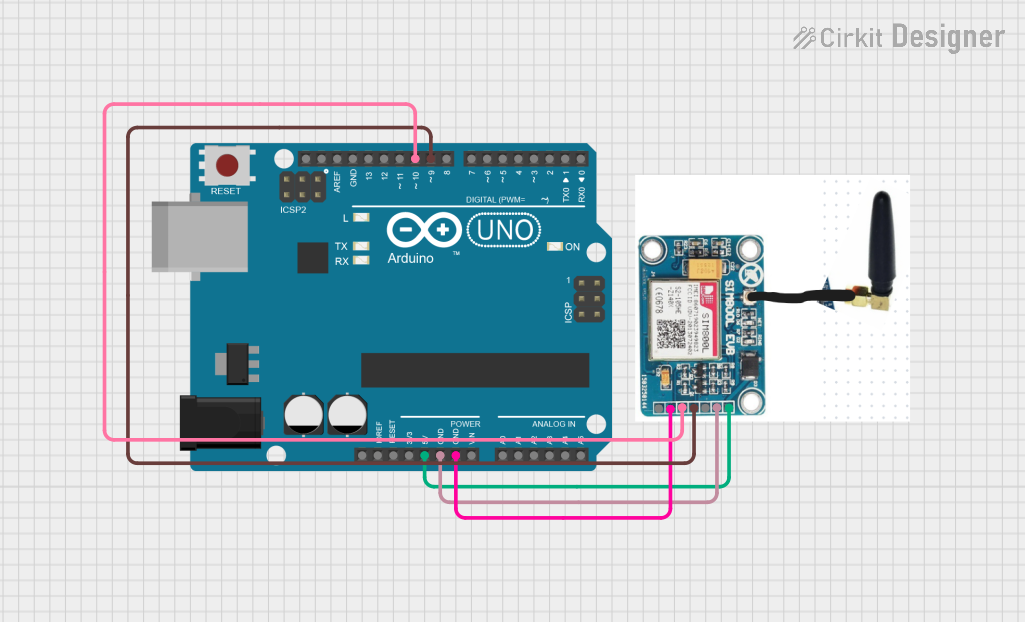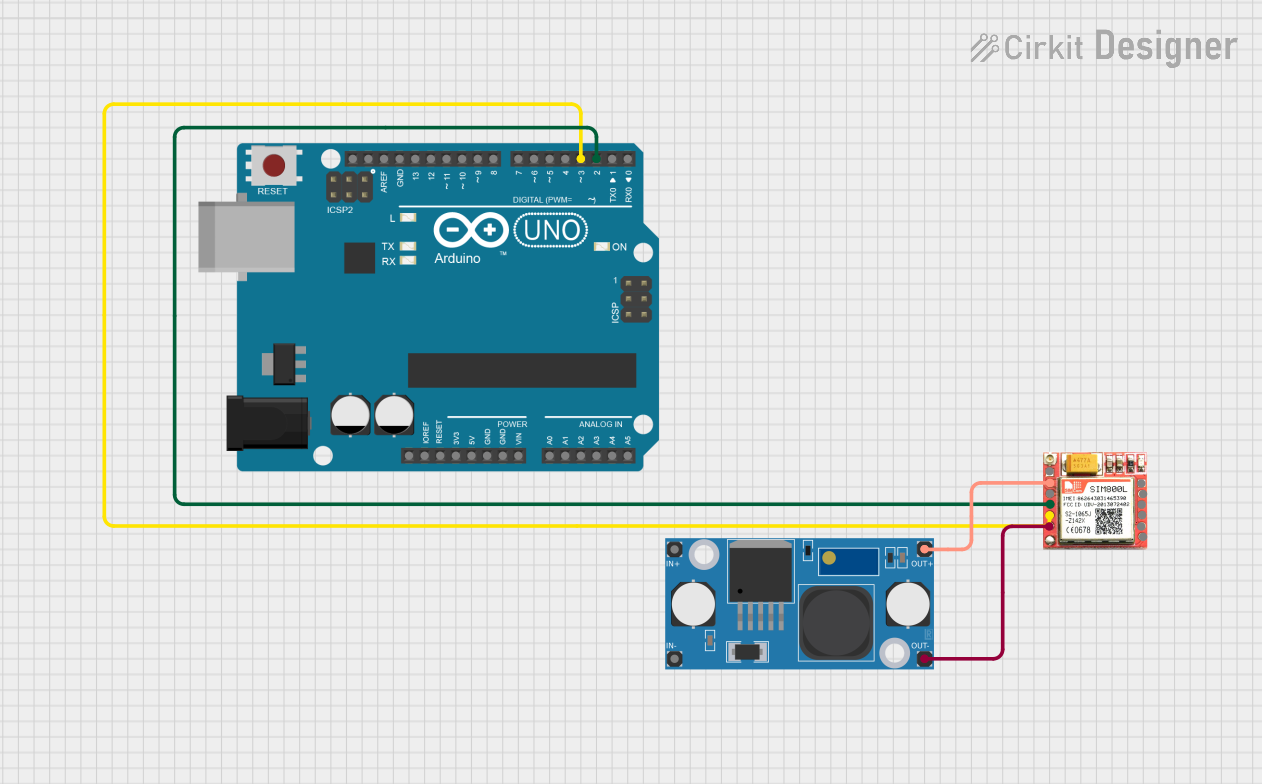
How to Use SIM800L EVB GSM: Examples, Pinouts, and Specs

 Design with SIM800L EVB GSM in Cirkit Designer
Design with SIM800L EVB GSM in Cirkit DesignerIntroduction
The SIM800L EVB GSM module is a compact and versatile development board designed for the SIM800L module, which is a GSM/GPRS module. This board enables communication with GSM networks, allowing users to send SMS messages, make phone calls, and connect to the internet via GPRS. It is widely used in various applications such as IoT devices, remote monitoring, and mobile communication systems.
Explore Projects Built with SIM800L EVB GSM

 Open Project in Cirkit Designer
Open Project in Cirkit Designer
 Open Project in Cirkit Designer
Open Project in Cirkit Designer
 Open Project in Cirkit Designer
Open Project in Cirkit Designer
 Open Project in Cirkit Designer
Open Project in Cirkit DesignerExplore Projects Built with SIM800L EVB GSM

 Open Project in Cirkit Designer
Open Project in Cirkit Designer
 Open Project in Cirkit Designer
Open Project in Cirkit Designer
 Open Project in Cirkit Designer
Open Project in Cirkit Designer
 Open Project in Cirkit Designer
Open Project in Cirkit DesignerCommon Applications and Use Cases
- IoT devices for remote data collection
- SMS-based remote control systems
- Vehicle tracking with GSM location
- Emergency call systems
- GPRS-based data logging
Technical Specifications
Key Technical Details
- Voltage: 3.4V to 4.4V (Typical 4.0V)
- Current: Pulsed 2A, Average 500mA
- Frequency Bands: Quad-band 850/900/1800/1900MHz
- Communication: GSM, GPRS Class 12
- Temperature Range: -40°C to +85°C
Pin Configuration and Descriptions
| Pin Number | Name | Description |
|---|---|---|
| 1 | VCC | Power supply (3.4V to 4.4V) |
| 2 | RST | Reset pin (active low) |
| 3 | RXD | UART Receive pin |
| 4 | TXD | UART Transmit pin |
| 5 | GND | Ground connection |
Usage Instructions
How to Use the Component in a Circuit
- Power Supply: Connect a stable power source to the VCC and GND pins. Ensure that the voltage is within the specified range.
- UART Communication: Connect the RXD and TXD pins to a microcontroller or PC for UART communication.
- Antenna: Attach an appropriate GSM antenna to the module for network connectivity.
- SIM Card: Insert a SIM card into the SIM card holder.
Important Considerations and Best Practices
- Use a regulated power supply to prevent damage to the module.
- Ensure that the antenna is properly connected and has sufficient gain for the application.
- Place the module away from electronic noise sources.
- Use proper ESD precautions when handling the module.
Example Code for Arduino UNO
#include <SoftwareSerial.h>
SoftwareSerial SIM800L(10, 11); // RX | TX
void setup() {
// Begin serial communication with Arduino and Arduino IDE (Serial Monitor)
Serial.begin(9600);
// Begin serial communication with SIM800L
SIM800L.begin(9600);
// Setting the module to auto-baud
SIM800L.println("AT+IPR=0");
delay(1000);
// Set module to SMS mode
SIM800L.println("AT+CMGF=1");
delay(1000);
// Send SMS in text mode
SIM800L.println("AT+CMGS=\"+1234567890\""); // Replace with recipient's number
delay(1000);
// The text of the message to be sent
SIM800L.println("Hello, World!");
delay(1000);
// End AT command with a ^Z, ASCII code 26
SIM800L.write(26);
delay(1000);
}
void loop() {
// If there's any serial available, read it and send it out
// SIM800L's UART (Serial Monitor)
if (Serial.available()) {
SIM800L.write(Serial.read());
}
// If there's any serial available from SIM800L, read it and send it out
// through Arduino's UART (Serial Monitor)
if (SIM800L.available()) {
Serial.write(SIM800L.read());
}
}
Troubleshooting and FAQs
Common Issues Users Might Face
- Power Issues: The module does not power up or frequently restarts.
- Network Connection: The module is unable to connect to the GSM network.
- SMS Failure: Unable to send or receive SMS messages.
Solutions and Tips for Troubleshooting
- Power Issues: Ensure that the power supply is stable and within the required voltage range. Check for any loose connections.
- Network Connection: Verify that the antenna is properly connected and the SIM card is active and has network coverage.
- SMS Failure: Check the SIM card balance and ensure that the SMS center number is correctly set.
FAQs
Q: Can the SIM800L EVB GSM module connect to a 5V power supply? A: No, the module requires a voltage between 3.4V and 4.4V. Using a 5V power supply without a proper voltage regulator can damage the module.
Q: How can I check if the module is properly connected to the network?
A: You can send the AT command AT+CREG? to check the network registration status.
Q: What should I do if the module does not respond to AT commands? A: Ensure that the wiring is correct, the power supply is stable, and the baud rate is set correctly. You may also need to reset the module.